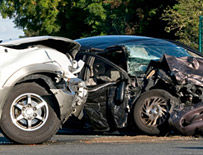Don’t Overlook These Less-Common Stroke Symptoms!

Stroke is a leading cause of death in the United States, and one out of every six deaths due to cardiovascular disease is due to stroke. Each year, about 795,000 people in this country have a stroke, and 610,000 of those are first strokes. In other words, for many Americans, a stroke can be unexpected and devastating. Even if a stroke isn’t lethal, it can be disabling, affecting your ability to work, walk, drive, communicate, and participate in the activities that you enjoy. Complete or near-complete recovery from a stroke is possible, but may take months or even years of treatment.
And while it’s true that most strokes happen to older people, strokes can occur at any age. According to the CDC, in 2014, 38% of people hospitalized for stroke were under the age of 65. Considering the seriousness of stroke, and how important early treatment is, everyone should know the signs of stroke and how to get help.
Many people are aware of the more common symptoms of stroke, such as loss of consciousness, arm weakness, difficulty speaking, or one side of the face that droops noticeably. However, there are symptoms that are either less common or less well known. If you experience these non-traditional stroke symptoms, you might write them off, thinking that they’ll go away or that they’re nothing serious. However, even a symptom that resolves or seems minor can be an indication that you’re having a stroke.
Non-Traditional Stroke Symptoms (and What to Do)
Certain symptoms are associated with stroke, although less commonly than the better-known or more dramatic symptoms described above. Some of these symptoms go away on their own or may be associated with other, less serious conditions. Many people don’t react to them as they would, say, a sudden, severe illness on one side of the body.
Less-known symptoms of stroke include:
- Difficulty breathing
- Fainting
- Confusion or disorientation
- Hallucination
- Agitation
- Nausea or vomiting
- Vision changes or loss of peripheral vision
- Seizures
- Hiccups
- Difficulty understanding speech
- Severe, sudden headache with no known cause
- Loss of coordination or difficulty walking
- Temporary loss of basic muscle movement, including bladder muscles
- Numbness on one side or area of the face
Anyone may experience these symptoms, but non-traditional stroke symptoms are much more common in women. Women are generally better than men about seeking medical treatment, but may still dismiss symptoms they perceive as minor.
What should you do if you or a loved one experiences less-common stroke symptoms? It may not be a stroke, but you should not make that assumption. You may not need emergency care if you suddenly get the hiccups, but if you experience other symptoms, especially in combination with one another, don’t just make a doctor appointment—call 911 or have someone take you to the emergency department.
Evaluating Uncommon Stroke Symptoms: Better Safe Than Sorry
As medical malpractice attorneys, many of the cases we see involve patients who experienced stroke symptoms and whose doctors did not offer timely testing or treatment that could have made a real difference to their health and prognosis. For example, clot-busting drugs given during the “golden hour” after stroke symptoms appear may significantly improve outcomes.
However, if you, as the patient, delay seeking evaluation, you are denying medical professionals the chance to get you the best treatments when they can be effective. We understand that emergency medical treatment can be expensive, and nobody wants to incur an unnecessary bill. Unfortunately, if you ignore symptoms of a stroke, you could find yourself facing much bigger medical bills along a long road to recovery.
Even if you are not experiencing a full-blown stroke, you could be having a transient ischemic attack (TIA), which many people refer to as a “mini-stroke.” We don’t like that term, because it suggests that a TIA is minor. In fact, a TIA is often a precursor to a major stroke, and getting prompt treatment can prevent a more serious condition from developing. The American Stroke Association prefers to refer to TIAs as “warning strokes.”
Protecting Yourself From Stroke
It is not always possible to prevent a stroke, but you can minimize your risk by controlling your weight and blood-pressure, maintaining a healthy diet, and following your primary care physicians recommendations. You should also be aware of any risk factors you may have, such as race or gender; African-Americans are at greater risk for stroke than white people; women are at greater risk for stroke than men. Stroke risk increases with age for everyone, but as we mentioned above, being young is not a guarantee you will not have a stroke. Among the other risk factors for stroke are having had a previous stroke.
If you have had a stroke and believe you were not properly diagnosed or treated, please contact The Fraser Law Firm P.C. to discuss your situation.









